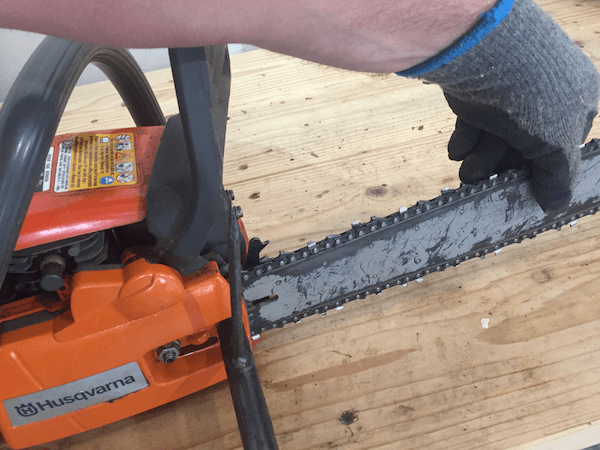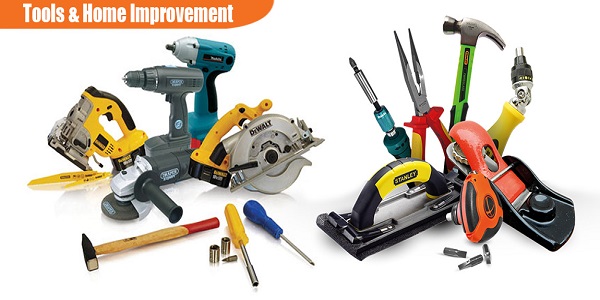A loose chainsaw chain is frustrating and unsafe. It can disrupt your work and pose dangers.
Understanding why the chain keeps coming loose can help solve the problem. Chainsaws are powerful tools, but they require proper maintenance to function correctly. A loose chain can be caused by several factors, such as wear and tear, improper tensioning, or even incorrect assembly.
These issues can affect cutting performance and safety. Regular checks and adjustments are essential to ensure your chainsaw operates smoothly. Learning the reasons behind a loose chain helps prevent future problems and ensures safe usage. By addressing these common causes, you can maintain your chainsaw in top condition and work confidently. Let’s explore why your chainsaw chain might be coming loose and what you can do about it.
Common Causes
Chainsaw chains can loosen unexpectedly, frustrating even seasoned users. Understanding why this happens is crucial. Identifying common causes helps in maintaining your chainsaw efficiently.
Loose Tension
Loose tension is a primary reason for chains coming off. Chains need tightness to work properly. If the tension isn’t right, the chain slips off. Regularly check and adjust tension as needed. This prevents accidents and ensures smooth operation.
Worn Components
Worn components can lead to a loose chain. Parts like the sprocket may wear out over time. A worn sprocket can’t hold the chain securely. Regular inspection is vital. Replace worn components promptly to maintain optimal performance.

Credit: www.youtube.com
Importance Of Proper Tension
The tension of your chainsaw chain is crucial. It’s not just about keeping the chain in place; it’s about ensuring the tool operates safely and efficiently. Have you ever felt frustrated when the chain keeps coming loose despite your best efforts? You’re not alone. Understanding the importance of proper tension can transform your chainsaw experience from a constant hassle to a seamless operation.
Safety Concerns
Loose chains are a safety hazard. They can lead to unexpected accidents. Imagine cutting wood and suddenly the chain jumps off—it’s terrifying. Proper tension minimizes these risks. It ensures the chain stays on track, reducing the chances of injury. Have you checked your chain tension lately? It might be the key to safer cutting sessions.
Performance Impact
A properly tensioned chain boosts performance. It cuts more efficiently and smoothly. When the chain is loose, you might notice uneven cuts or the chainsaw struggling. This is because the chain isn’t tight enough to grip the wood effectively. Tightening the chain enhances precision and power. Are you wasting time with a loose chain? It’s time to give your chainsaw the attention it deserves.
Proper tension isn’t just a technical detail—it’s the backbone of your chainsaw’s functionality. Next time you gear up for a task, remember that a well-tensioned chain is your best ally. Take a moment to adjust it before you start. Your safety and efficiency depend on it. Are you ready to make your chainsaw work for you rather than against you?
Identifying Chain Issues
Identifying chain issues on your chainsaw can be a frustrating endeavor. You’ve tightened the chain repeatedly, yet it still comes loose. Understanding the root cause is crucial for effective troubleshooting. In this section, we’ll cover how to spot the problems early on.
Visual Inspection
Start by taking a close look at your chainsaw chain. Is it aligned properly on the guide bar? A misaligned chain is often the culprit behind it coming loose. Check for any debris or dirt obstructing the bar. These small particles can interfere with the chain’s tension.
Look out for any visible damage. A bent or cracked chain can never maintain proper tension, no matter how many times you tighten it. If the chain looks worn or damaged, you might need a replacement.
Signs Of Wear
Chainsaw chains are prone to wear and tear. Examine the teeth and links on your chain closely. Are the teeth dull or chipped? Dull teeth not only affect performance but can also loosen the chain.
Consider the chain’s age. If it’s been in use for a long time, it might be stretched out. Chains naturally elongate over time, causing them to lose tension. Check if the chain sags even after tightening—this is a strong indication it needs replacing.
Don’t ignore the chain bar. A worn bar can lead to improper chain tension. Inspect the bar for grooves or dents. These imperfections can cause the chain to slip and loosen.
Have you ever found your chain loosening just after you thought you had fixed it? This cycle can be frustrating but identifying wear signs can save you time and effort. What other issues have you faced with your chainsaw?

Credit: www.firewood-for-life.com
Adjusting Chain Tension
Adjusting the tension of your chainsaw chain is crucial for its performance and safety. If you’ve ever found your chain slipping off or getting loose, you’re not alone. Many chainsaw users face this issue, often because the tension isn’t set correctly. Let’s dive into the steps you can take to ensure your chain stays snug and functional.
Using The Tension Screw
The tension screw is your best friend when it comes to keeping your chainsaw chain tight. It’s usually located on the side of the chainsaw, near the bar. Before adjusting, make sure your chainsaw is off and cool to the touch.
With the chainsaw securely placed on a flat surface, turn the tension screw clockwise to tighten the chain. Make small adjustments, as overtightening can lead to excessive wear on the chain and bar.
Check the chain’s tension by pulling it slightly away from the bar. If it moves more than a few millimeters, it’s too loose. A properly adjusted chain should snap back into place with ease. If you’re unsure, consult your chainsaw’s manual for specific guidance.
Checking Alignment
Tension isn’t the only thing that affects your chain’s performance. Misalignment can also cause the chain to slip. Before you start adjusting tension, inspect the chain and bar for alignment.
Ensure the chain sits evenly on the bar. Look for any kinks or twists that might indicate misalignment. If the chain isn’t sitting straight, it might be time to clean or replace parts.
Consider this: if you’re constantly adjusting the tension, misalignment might be the root cause. Regular checks can prevent unexpected downtime and keep your chainsaw running smoothly.
Have you ever wondered why your chain loosens after every use? Maybe it’s time to reassess your tensioning technique. Small adjustments and regular inspections can make a big difference in your chainsaw’s longevity and safety. Remember, a well-maintained chainsaw is not just a tool, but an investment in your work efficiency and safety.
Replacing Worn Parts
Loose chains on a chainsaw often result from worn parts. Regular maintenance prevents issues like chain tension loss. Replacing damaged tensioning systems ensures smoother operation and safety.
Replacing worn parts is crucial for keeping your chainsaw in top condition. A loose chain often results from wear and tear on key components. Identifying and replacing these parts can solve the issue. This ensures your chainsaw runs efficiently and safely. Let’s explore the importance of replacing the guide bar and chain.Guide Bar Replacement
The guide bar holds the chain in place during operation. Over time, it can wear down or become bent. A damaged guide bar may cause the chain to slip or come loose. Check the bar regularly for signs of wear. Look for cracks, nicks, or bends. Replace the guide bar if you notice any damage. An intact guide bar helps the chain stay tight and aligned.Chain Replacement
Chains endure a lot of stress while cutting through wood. A worn chain stretches, loosens, and affects performance. Regularly inspect your chainsaw chain for signs of wear. Dull teeth and stretched links are indicators. Replace the chain if it shows these signs. A new chain improves cutting efficiency and reduces loosening issues. Always choose the correct chain size for your model. Proper fit is key for safety and effectiveness.
Credit: www.reddit.com
Maintaining Your Chainsaw
Maintaining your chainsaw is crucial for its performance and longevity. A well-maintained chainsaw not only cuts better but also ensures safety. Regular care prevents the chain from loosening frequently. Simple maintenance steps can make a significant difference.
Regular Cleaning
Cleaning your chainsaw regularly keeps it in good shape. Dirt and debris accumulate around the chain and sprocket. This can affect the chain tension. Use a brush or cloth to remove this buildup. Pay special attention to the bar groove and chain links. These areas collect the most grime. Regular cleaning reduces wear and tear.
Lubrication Tips
Proper lubrication is essential for chainsaw performance. The chain needs consistent oiling to reduce friction. This prevents overheating and loosening. Check the oil level before each use. Ensure the oil is suitable for your chainsaw model. Apply oil directly onto the chain for even coverage. This helps maintain the right tension.
Preventive Measures
If you’ve ever found yourself frustrated with a chainsaw chain that keeps coming loose, you’re not alone. Fortunately, there are preventive measures you can take to maintain your chainsaw and keep it running smoothly. By focusing on proper storage and routine inspections, you can ensure your chainsaw is always ready for action.
Proper Storage
How often do you just toss your chainsaw in the garage after a long day of work? Proper storage is more than just putting it away. Avoid storing your chainsaw in damp or humid areas, as moisture can cause rust and weaken the chain.
Consider hanging it on a wall or placing it on a shelf to prevent accidental damage. Additionally, keeping it in a case can protect it from dust and debris, which can affect the chain’s tension.
Routine Inspections
When was the last time you checked your chainsaw’s chain tension? Regular inspections can prevent your chain from coming loose unexpectedly. Make it a habit to inspect your chainsaw before each use.
Look for signs of wear and tear, such as cracks or missing teeth on the chain. Tighten the chain if it’s loose, and replace any worn parts immediately. Regular maintenance not only prevents issues but extends the life of your chainsaw.
Have you ever considered setting a reminder on your phone for these inspections? It could be a game-changer in keeping your chainsaw in top condition.
Professional Help
Chainsaw chains often come loose due to improper tension, worn components, or incorrect installation. Regular maintenance and professional help can ensure proper chain function and safety. Adjusting the tension and checking for wear can keep your chainsaw running smoothly.
When your chainsaw chain keeps coming loose, it can be frustrating and potentially dangerous. While DIY fixes can solve the problem at times, there are instances where professional help is necessary. Seeking expert assistance can save you time, ensure safety, and prolong the life of your chainsaw. ###When To Seek Assistance
If you’ve tried tightening the chain and it still keeps coming loose, it might be time to consult a professional. Loose chains can indicate deeper issues, such as worn-out components or improper assembly. Have you noticed any unusual noises or vibrations? These could be signs that something more serious is at play. Don’t wait until the problem escalates. A professional can diagnose and address the issue before it leads to costly repairs. ###Choosing A Service Provider
Selecting the right service provider can make all the difference. Look for certified technicians with experience in chainsaw repairs. Check online reviews and ask for recommendations from fellow chainsaw users. Does the service provider offer guarantees or warranties on their work? Knowing that you’re covered can provide peace of mind. Compare prices but remember, the cheapest option isn’t always the best. Prioritize quality and expertise over savings. By consulting a professional, you not only fix the problem but also gain valuable insights into maintaining your chainsaw. This proactive approach can prevent future issues and keep your tool in peak condition.Frequently Asked Questions
Why Does The Chain Keep Loosening On A Chainsaw?
The chain may loosen due to improper tensioning, worn sprockets, or stretching over time. Regular maintenance is crucial. Check and adjust the tension before each use. Ensure proper lubrication and inspect for wear and tear. Following these practices can help maintain chain tension effectively.
How Do I Keep My Chainsaw Chain Tight?
Ensure the chainsaw is turned off and cool. Loosen the guide bar nuts slightly. Adjust the tension screw until the chain fits snugly against the guide bar. Tighten the nuts securely and check the tension by pulling the chain. It should snap back into place easily without sagging.
Why Does My Chain Keep Coming Off?
Your chain might come off due to improper tension or alignment. Check for worn components or a loose derailleur. Make sure the chain is clean and lubricated. Inspect for bent chainrings or sprockets. Ensure the drivetrain components are compatible and properly installed.
Why Does My Chainsaw Chain Stretch So Fast?
Chainsaw chains stretch quickly due to heat expansion, improper tension, or poor lubrication. Frequent use causes wear, leading to elongation. Incorrect tension settings or inadequate oiling increase friction, accelerating stretch. Regular maintenance and proper tension adjustment can help minimize this issue and extend chain life.
Conclusion
Troublesome chainsaw chains can be frustrating. Regular checks are essential. Tighten the chain before each use. Inspect the bar for damage. Replace worn-out parts promptly. Proper maintenance prevents issues. Clean the chainsaw after each session. Understand your chainsaw’s manual. Follow the steps for chain adjustment.
Safety should always come first. A loose chain can be dangerous. Keep your chainsaw in top shape. Enjoy smooth and efficient cutting. With these tips, you’ll have fewer problems. Your chainsaw will work better. You’ll cut wood with ease and confidence.


